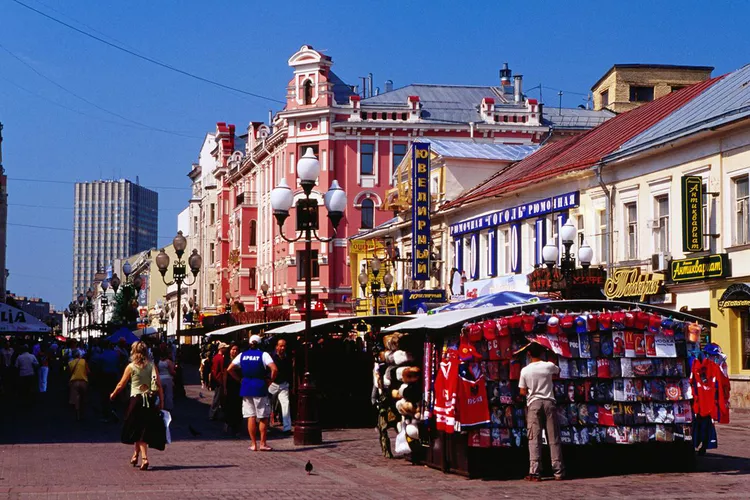Exploring Arbat Street: A Historical Gem in Moscow
Arbat Street, or Ulitsa Arbat, is also known as the Old Arbat (to differentiate it from New Arbat Street). This historic street once served as a main artery in Moscow and is one of the oldest original streets in the Russian capital. The surrounding Arbat District was historically a hub for craftsmen, evident in the street’s side alleys named after traditional trades or goods such as Carpenters, Bread, or Silver. Conveniently located within walking distance of the Kremlin, Arbat Street represents a free and captivating attraction in the heart of ancient Moscow.

Historical Significance
The historical importance of Arbat Street cannot be understated. Initially seen as a residential area during the 1700s, it attracted Moscow’s elite and influential families, including notable individuals like the iconic poet Alexander Pushkin, whose house is preserved as a museum. Renowned families such as the Tolstoys and the Sheremetevs once called this street home. However, many of the oldest homes faced damage due to fires, resulting in an eclectic mix of architectural styles that includes Art Nouveau.
Evolution Over the Centuries
During the 19th century, Arbat Street transformed from the outskirts to a central location in Moscow, allowing visitors to envision the city during Pushkin’s or Tolstoy’s eras. Today, it has evolved into a bustling area frequented by tourists, street performers, and vendors. Notably, the street became a pedestrian zone in the 1980s, making it easier for visitors to enjoy its historical ambiance without the interference of motor vehicles, which adds to its charm.
Must-See Attractions
While rich in history, Arbat Street also thrives as a lively tourist magnet. Essential sites include:
- The Pushkin House-Museum, where visitors can pay homage to the father of Russian literature.
- The Ministry of Foreign Affairs, one of Stalin’s Seven Sisters located on Smolenskaya-Sennaya Square.
- Monuments and memorials, such as the one dedicated to songwriter Bula Okudzhava.
- The architecturally unique Melnikov House, designed by Konstantin Melnikov.
- The Wall of Peace, the Spaso House, and the Church of the Saviour in Peski.

Visitor Tips
Despite its allure, some visitors find the tourist-centric atmosphere at Arbat Street overwhelming. Unscrupulous stakeholders seek to capitalize on the crowds, including buskers and street vendors, which may detract from the experience. Consequently, tourists should remain vigilant against pickpockets. Nevertheless, Arbat Street remains a Moscow must-see attraction, deeply embedded in the cultural psyche of Russia, as referenced by various artists, musicians, and writers throughout the ages.





